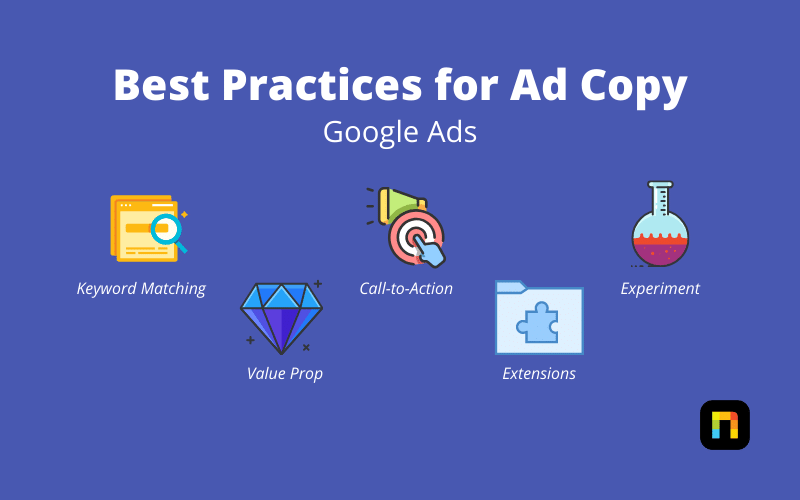In the realm of digital marketing, Google Ads stands out as a powerhouse tool for businesses seeking to reach their target audience effectively. Amidst fierce competition for attention, crafting compelling ad copy is paramount to success. Whether you’re a seasoned marketer or just dipping your toes into the world of online advertising, understanding the nuances of writing effective ad copy can make all the difference in your campaign’s performance.
In this comprehensive guide, we’ll delve into the strategies, techniques, and best practices for creating ad copy that not only grabs attention but also drives clicks, conversions, and ultimately, revenue.
Understanding the Fundamentals of Ad Copywriting
Before diving into the specifics, it’s essential to grasp the foundational principles of ad copywriting. Effective ad copy isn’t just about catchy phrases; it’s about understanding your audience, conveying your message clearly, and inspiring action.
- Know Your Audience: Conduct thorough research to understand your target demographic’s needs, pain points, and preferences. Tailor your ad copy to resonate with their interests and motivations.
- Clarity is Key: Keep your messaging concise and straightforward. Avoid jargon or overly complex language that might confuse or alienate potential customers.
- Highlight Unique Selling Propositions (USPs): What sets your product or service apart from the competition? Emphasize your USPs prominently in your ad copy to attract attention and differentiate yourself in a crowded marketplace.
Crafting Compelling Headlines
The headline is the first thing users see when your ad appears, making it arguably the most critical element of your ad copy. A captivating headline can entice users to click and learn more. Here’s how to make yours stand out:
- Be Specific and Relevant: Clearly communicate what your ad offers and why users should care. Use keywords that align with users’ search queries to enhance relevance and improve ad rank.
- Create a Sense of Urgency: Incorporate phrases like “Limited Time Offer” or “Act Now” to encourage immediate action. Urgency prompts users to act quickly, reducing the likelihood of them scrolling past your ad.
- Test Different Variations: A/B testing is crucial for optimizing your headlines. Experiment with different wording, phrasing, and calls to action to identify which resonates most effectively with your audience.
Mastering Persuasive Ad Copy
Beyond the headline, the body of your ad copy plays a vital role in persuading users to take action. Here’s how to make every word count:
- Focus on Benefits, Not Features: Rather than listing product features, emphasize the benefits they offer to the customer. How will your product or service improve their life or solve their problem?
- Use Emotional Triggers: Appeal to your audience’s emotions to forge a deeper connection. Whether it’s a sense of belonging, fear of missing out, or desire for success, tapping into emotions can compel action.
- Include a Strong Call to Action (CTA): Clearly instruct users on what action to take next, whether it’s “Shop Now,” “Learn More,” or “Sign Up Today.” Make your CTA concise, compelling, and aligned with your campaign objectives.
Optimizing for Keywords and Ad Extensions
To maximize the effectiveness of your Google Ads campaigns, it’s crucial to incorporate relevant keywords and leverage ad extensions effectively.
- Keyword Optimization: Conduct thorough keyword research to identify high-value terms relevant to your offering. Incorporate these keywords strategically into your ad copy to improve ad relevance and click-through rates.
- Utilize Ad Extensions: Take advantage of ad extensions such as site links, callouts, and structured snippets to provide additional information and enhance the visibility of your ads. Extensions not only improve ad performance but also offer users more reasons to engage with your ad.
Monitoring and Iterating for Continuous Improvement
Even the most well-crafted ad copy can benefit from ongoing monitoring and optimization. Here’s how to refine your approach over time:
- Track Key Metrics: Monitor metrics like click-through rate (CTR), conversion rate, and return on ad spend (ROAS) to gauge the effectiveness of your ad copy. Identify areas for improvement based on performance data.
- Split Testing: Continuously test different ad variations to identify what resonates most with your audience. Experiment with headline variations, ad copy length, and imagery to refine your approach and maximize results.
- Stay Updated on Best Practices: The digital marketing landscape is constantly evolving, so it’s essential to stay informed about the latest trends, updates, and best practices in ad copywriting and Google Ads optimization.
Conclusion:
Mastering the art of writing effective ad copy in Google Ads requires a combination of creativity, strategic thinking, and ongoing optimization. By understanding your audience, crafting compelling messaging, and leveraging the power of keywords and ad extensions, you can create ads that not only capture attention but also drive meaningful results for your business. With a commitment to continuous improvement and a willingness to adapt to changing trends, you’ll be well-equipped to succeed in the dynamic world of online advertising.

